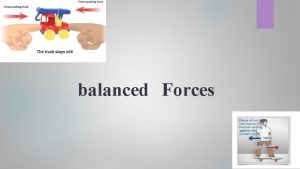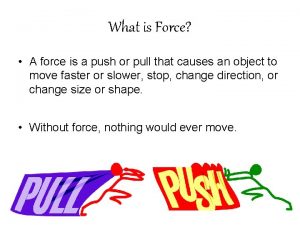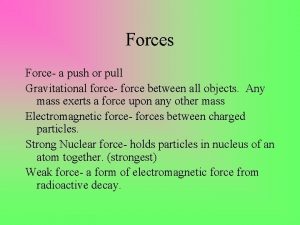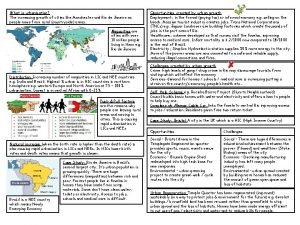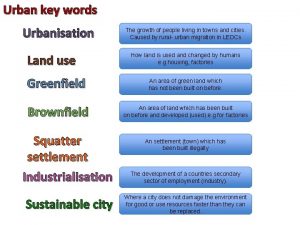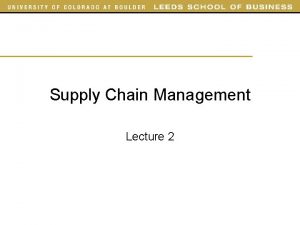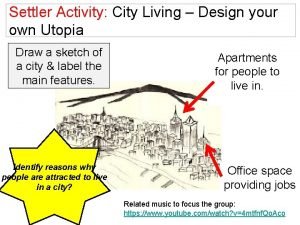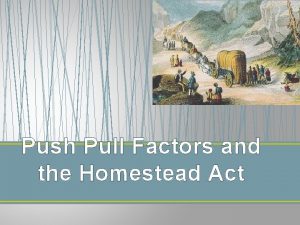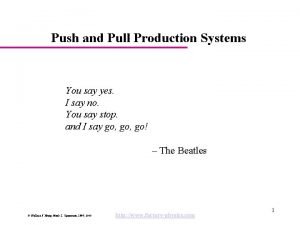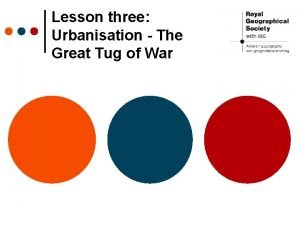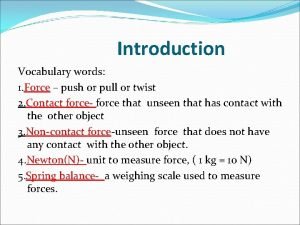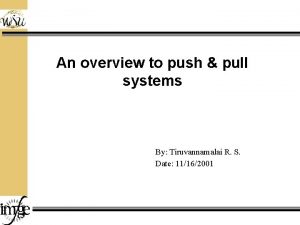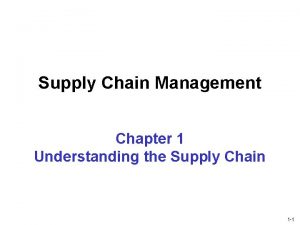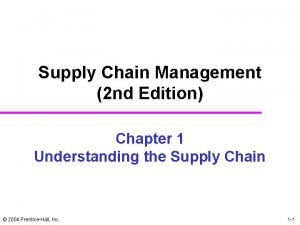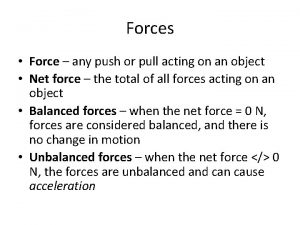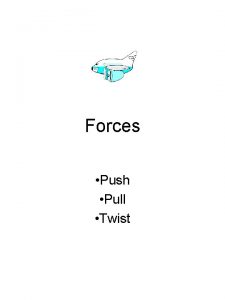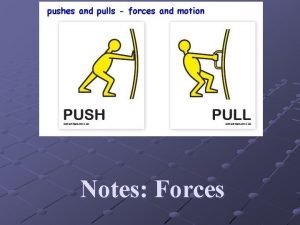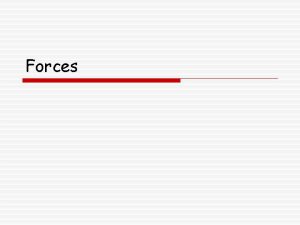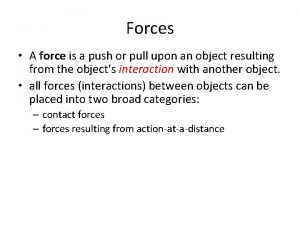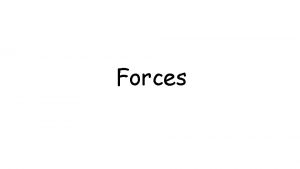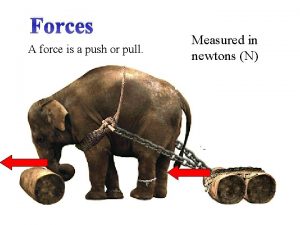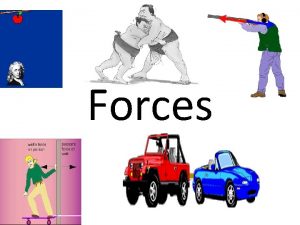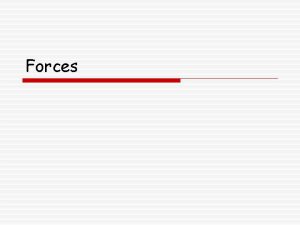Fluid Forces Force Force any push or pull
































- Slides: 32

Fluid Forces

Force • Force– any push or pull upon an object Example: Lifting books Pushing a car stuck in the snow Pulling your little brother/sister in a wagon Pushing on a wall Earth being pulled by the sun

Inertia • Inertia—an object at rest stays at rest and an object that is moving at constant velocity will remain moving unless an outside unbalanced force acts upon it. • You catch a ball • Gravity pulls you down

Pressure • Pressure-force pushing on a surface

Pressure

Pressure

Pressure Why? ? ?

Pressure • Pressure equals force divided by area Pressure = Force Area

Pressure = force area Pressure = 10 newtons 2 m 2 Pressure = 5 newtons/m 2 = 5 pascal (Pa)

Pressure Why? ? ?

Pressure Increase area decrease pressure Decrease area increase pressure For example: If you apply 20 newtons of force in an area of 20 m 2 then you have a pressure of 1 n/m 2 or 1 pascal. If you apply 20 newtons of force in 5 m 2 then you have a pressure of 4 n/m 2 or 4 pascal. Same force but different area, different pressure

Fluid Any substance that can easily flow. For example: water, air, helium, oxygen, oil etc.

Fluid Pressure

Pressure

Pressure and Elevation/Depth Pressure decrease as elevation increases

Pressure and Elevation/Depth Pressure increases as depth increases

Pascal’s Principle When a force is applied to a confined fluid, the increase of pressure is transmitted equally to all parts of the fluid.

Pascal’s Principle

Pascal’s Principle

Hydraulic System A hydraulic system multiplies the force by applying the force to a smaller area transmitted through a confined fluid to a larger area. Example; Push with 10 N of force on a 5 m 2 area. Pressure = 10 N/5 m 2= 2 N/m 2 Apply that pressure over a greater area 2 N/m 2= ? /10 m 2 2 n/m 2 X 10 m 2=Force 20 N=Force

Pascal’s Principle Hydraulic System 10 N 5 m 2 20 N 2 N/m 2 10 m 2

Floating or Sinking Buoyant force—force exerted by water, upward direction-against gravity

Archimedes Principle—buoyant force equal to the weight of the fluid displaced by the object

Floating or Sinking Gravity is always the downward force-which is the weight of the object. If weight is greater than the opposite buoyant force then the object will sink If weight is less than the buoyant force then the object will only sink until enough fluid is displaced with a weight equal to the object


Density is equal to mass divided by volume The density of water is 1. 0 g/m. L Density = mass volume D=m v

Density Units of density is g/cm 3 Or g/m. L 1 cm 3 = 1 m. L

Density An object has a mass of 25 g and takes up a volume of 26 cm 3 The density is. 961 g/cm 3 D=m v. 961 g/cm 3 = 25 g 26 cm 3

You Try Density An object has a mass of 300 g and a volume of 50 m. L Reminder: D=m v Answer: 300 g/50 m. L = 6 g/m. L

One More A regular shaped object has a mass of 20 grams. The length of the object is 2 cm; the width is 3 cm ; and the height is 3 cm. What is the density of the object? Do you think it will sink or float in water?

Answer Volume = 2 cm X 3 cm 18 cm 3 Density = mass/volume Density = 20 grams /18 cm 3 Density = 1. 1111 g/cm 3 Sinks in water

Bernoulli’s Principle Pressure exerted by a moving fluid is less than the pressure of the surrounding fluid
 Balanced forces definition
Balanced forces definition Magnetic force push or pull
Magnetic force push or pull Is gravitational force a push or pull
Is gravitational force a push or pull Abbas jamil محبوب قلبي
Abbas jamil محبوب قلبي Push and pull factors of urbanisation
Push and pull factors of urbanisation Push and pull factors of urbanisation
Push and pull factors of urbanisation Centrifugal movement geography
Centrifugal movement geography Curitiba sustainable city
Curitiba sustainable city Collaborative supply chain
Collaborative supply chain Strategia pull
Strategia pull Your
Your Push and pull scenarios
Push and pull scenarios Push/pull factors definition
Push/pull factors definition Push and pull system examples
Push and pull system examples Carefully blended mix of promotion tools
Carefully blended mix of promotion tools Push communication
Push communication Push pull profile strategies marketing communications
Push pull profile strategies marketing communications Market pull definition
Market pull definition The great tug of war
The great tug of war Kanban push pull
Kanban push pull Veille informationnelle outils
Veille informationnelle outils Oros push pull
Oros push pull Veille informationnelle définition
Veille informationnelle définition Jit environment
Jit environment Push and pull venn diagram
Push and pull venn diagram Replenishment cycle in supply chain
Replenishment cycle in supply chain Influencing techniques
Influencing techniques Push pull method
Push pull method What is push pull feed steering
What is push pull feed steering Cycle view and push pull view
Cycle view and push pull view Cycle view of supply chain processes
Cycle view of supply chain processes Rose nelson osmotic pump
Rose nelson osmotic pump Quasi complementary push pull amplifier
Quasi complementary push pull amplifier
